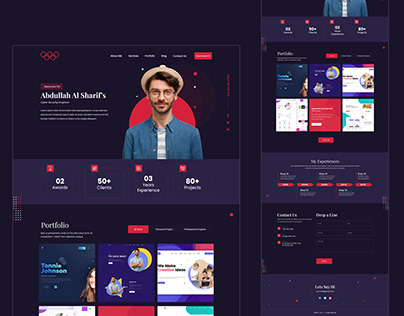Website Design in copyright: User-Friendly, Fast, and Responsive Websites
Website Design in copyright: User-Friendly, Fast, and Responsive Websites
Blog Article
Boost Involvement With Cutting-edge Site Style Solutions
A thoughtfully crafted customer experience, underpinned by calculated aesthetic style and interactive elements, can significantly improve individual involvement. By checking out various methods such as receptive style and personalized material, businesses can develop a system that not only mesmerizes customers however additionally promotes long-term loyalty.
Recognizing User Experience
Comprehending customer experience (UX) is important for developing effective website layout solutions, as it directly affects how customers engage with digital systems. A thorough UX approach incorporates various components, including individual, usability, and availability satisfaction, every one of which add to the total performance of a site.
To begin with, usability focuses on exactly how quickly users can navigate and find the details they look for. Accessibility guarantees that all individuals, including those with disabilities, can effectively engage with the site.
Furthermore, understanding individual personas is vital for tailoring the experience to fulfill certain audience needs. By carrying out user study and testing, developers can collect insights that notify design choices, ensuring the website not only fulfills aesthetic objectives but likewise fulfills practical needs. Inevitably, a thoughtful technique to UX style fosters interaction, urges retention, and improves overall individual complete satisfaction, which are essential for the success of any electronic platform.
Visual Style Strategies
Integrating efficient aesthetic design methods is important for recording individual interest and enhancing the overall individual experience on a website. A well-thought-out aesthetic hierarchy overviews individuals through the material, enabling them to conveniently take in and browse details. This can be attained with the critical use of typography, color pattern, and spacing, which collectively create a interesting and natural layout.
Color plays an essential function in stimulating emotions and developing brand name identity. Using a well balanced shade combination that aligns with the brand's principles can cultivate knowledge and trust. In addition, incorporating high-grade photos and graphics boosts visual allure and can significantly boost customer engagement.
Whitespace, typically overlooked, is just as important as it permits web content to breathe and protects against frustrating individuals with clutter. It helps with easier reading and comprehension, leading to an extra pleasurable searching experience.

Interactive Aspects for Interaction

One trick facet of interactive style is personalization. Customizing experiences based on user actions and choices can dramatically increase involvement. Tailored material recommendations or vibrant customer interfaces that adapt to specific options produce a feeling of ownership and relevance, motivating users to discover further.
Gamification is one more effective approach. Including game-like aspects, such as achievements or rewards for finishing tasks, can change ordinary communications into pleasurable experiences. This method not just enhances involvement however also urges customers to return, creating a loyal audience.
Moreover, interactive components can help with social sharing, enhancing a web site's reach. Attributes like comment areas, share buttons, and user-generated web content areas foster area communication, transforming site visitors right into energetic individuals (website design copyright). Inevitably, the calculated use interactive aspects is important for producing a engaging and appealing web site that resonates with users
Flexible and responsive Style
A well-designed web site must focus on flexible and receptive design to guarantee optimum user experiences throughout a variety of devices and screen sizes. Responsive style uses fluid grids and flexible photos, enabling the format to instantly change based on the viewer's display dimension. This method makes sure that individuals can easily browse and interact with the content, despite visit their website whether they are making use of a desktop, smartphone, or tablet .
On the other hand, adaptive design utilizes predefined formats that are tailored to details device categories. This implies that the site identifies the type of gadget being made use of and offers the proper format, which can improve packing times and maximize the display screen of essential aspects. While both approaches intend to enhance use, responsive layout is usually favored for its fluidness and smooth change between devices.
Integrating responsive and flexible layout not just improves individual fulfillment but additionally favorably influences online search engine rankings. Online search engine focus on mobile-friendly sites, therefore raising presence and drawing in even more site visitors. Consequently, buying these style strategies is vital for companies wanting to involve their target market effectively and preserve an one-upmanship in today's digital landscape.
Analyzing Individual Feedback and Information

Examining metrics such as bounce rates, time on page, and click-through rates supplies a measurable point of view on individual involvement. These metrics assist developers determine which material resonates and which locations may require optimization. A/B testing can be employed to evaluate variants in layout, permitting designers to make enlightened decisions based on individual communications.
Incorporating user feedback not just boosts site use but likewise cultivates a feeling of neighborhood and trust fund. Engaging with individuals via comments loops cultivates commitment and motivates repeat visits. Eventually, leveraging individual feedback and information evaluation is essential to creating a vibrant, user-centered site that adapts to evolving customer needs and preferences, thus driving greater interaction and fulfillment.
Verdict
Finally, cutting-edge web site style services considerably enhance user interaction by prioritizing individual experience, using reliable aesthetic strategies, and integrating interactive elements. The implementation of useful site adaptive and receptive design ensures availability across numerous devices, better cultivating customer interaction. Continuous analysis of user comments and data promotes continuous improvements, causing sustained satisfaction and loyalty. Inevitably, the merging of these layout principles grows an appealing on-line atmosphere, important for driving lasting user engagement and commitment.
An attentively crafted customer experience, underpinned by critical aesthetic style and interactive components, can significantly boost customer engagement.Incorporating reliable aesthetic style approaches is essential for recording individual focus and enhancing the general check this user experience on a website.Individual feedback and data evaluation are important components of effective website layout, as they give important understandings right into user actions and choices. Ultimately, leveraging user comments and data analysis is important to producing a vibrant, user-centered website that adjusts to evolving individual demands and preferences, consequently driving greater engagement and fulfillment.
In conclusion, cutting-edge web site layout solutions considerably boost user involvement by focusing on customer experience, utilizing efficient visual techniques, and integrating interactive components.
Report this page